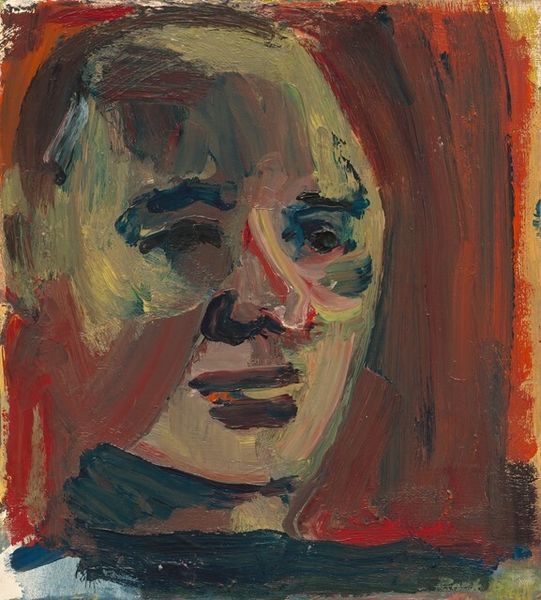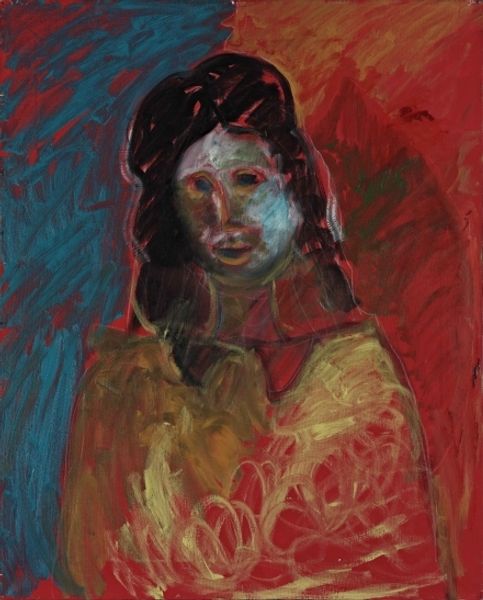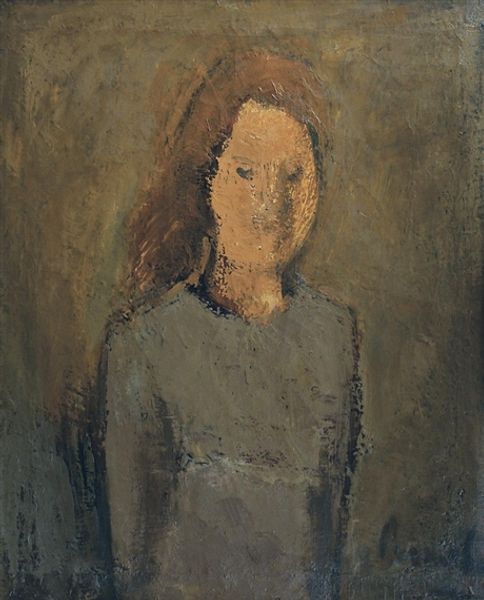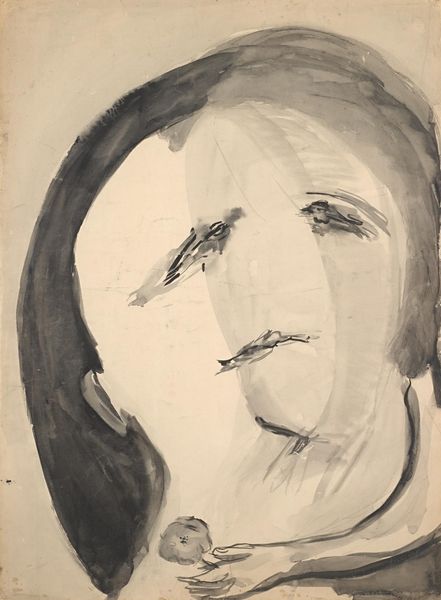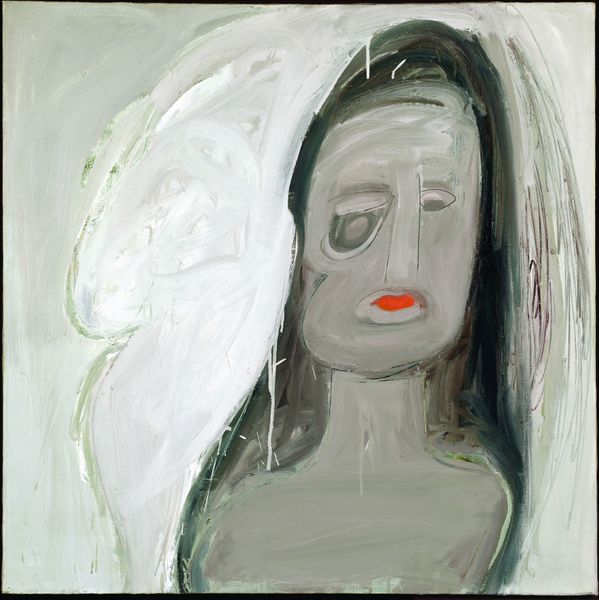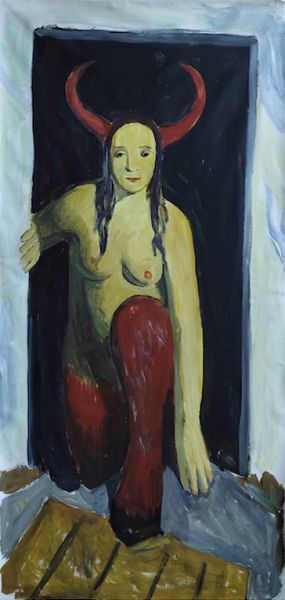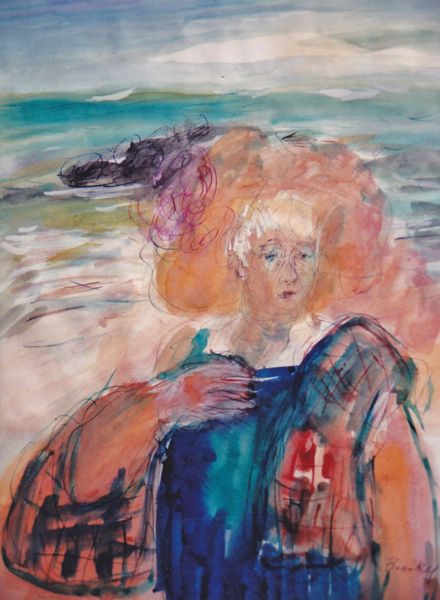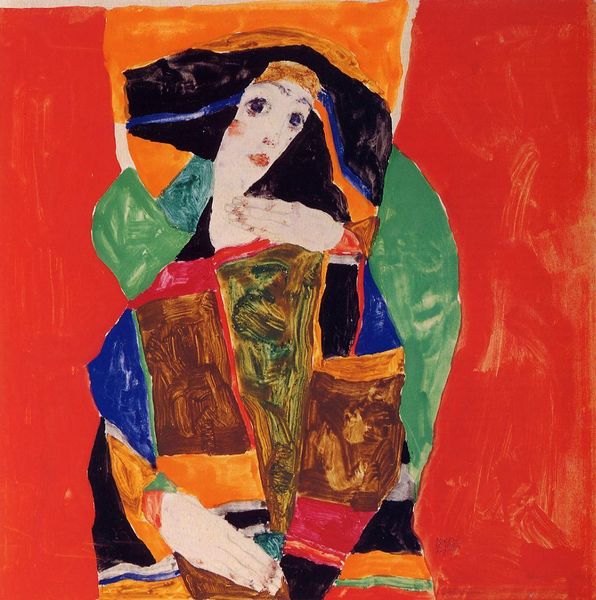
Copyright: Marlene Dumas,Fair Use
Curator: This is Marlene Dumas's "Evil is Banal," an oil painting from 1984. What's your immediate reaction? Editor: Unease. There's something deeply unsettling in the flatness of her gaze and the washed-out palette, particularly around the face. The bright orange hair adds a discordant note. Curator: I find it compelling how Dumas used the expressive qualities of oil paint here to challenge the notion of portraiture as objective representation. Look at the rapid brushstrokes, the thin washes, the way she deliberately avoids photographic likeness. It's about the construction, and I’m interested in how this deliberate process of construction adds to our discomfort when looking at it. Editor: I'm drawn to the way she uses colour to create this psychological state. Orange, which normally signifies warmth or creativity, is used here to frame this disturbingly pale face, enhancing that sense of dissociation, as though warmth can’t permeate the core being. Curator: Indeed, and what about the title? "Evil is Banal." Dumas challenges us to confront the uncomfortable truth that evil is not necessarily monstrous but can exist in the ordinary, the everyday. The sitter props her face on her hand in this somewhat commonplace gesture, belying something altogether more profound going on behind the eyes. I like that the artist provides access points like the hand and then destabilizes our ability to reach deeper by how the painting comes to be. Editor: I keep returning to the eyes. There's a startling asymmetry in how they are depicted. One seems clouded, almost blind, the other, unsettlingly focused. The eyes in portraits are typically 'windows to the soul'. However, here it feels like peering into an abyss of moral indifference. I suspect that if this was sculpted the uncanny feel would be intensified tenfold. Curator: Perhaps that sense of moral indifference emerges from Dumas’s technique as well. Thin applications of oil paint over canvas build an unsettling visual dynamic. Each brushstroke a gesture of inquiry that doesn’t quite meet the subject it surveys. What we might read as 'indifference' could emerge from an investigative engagement of material instead of any particular symbolism within its figurative subject. Editor: Fascinating. So, for you, it's the means of production that reflect her perspective. I tend to think the image reflects an enduring discomfort, not just of this individual but potentially that of society itself. Curator: Ultimately, Dumas pushes us beyond simplistic notions of good and evil, challenging us to locate both within ourselves. Editor: I agree, a disturbing painting. I think it serves as a powerful, lasting commentary on humanity’s capacity for moral failure.
Comments
No comments
Be the first to comment and join the conversation on the ultimate creative platform.
